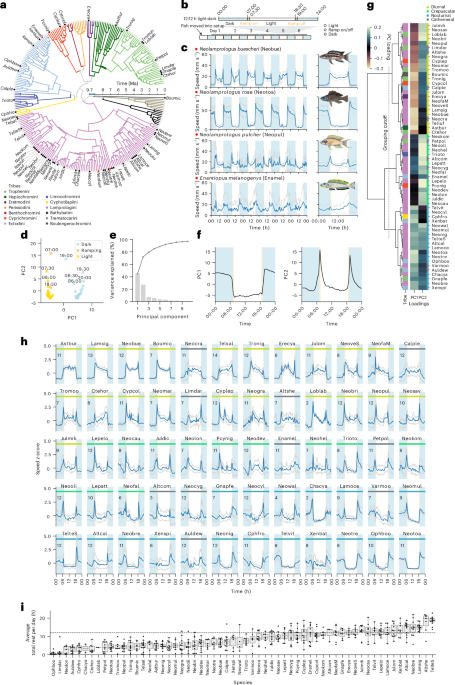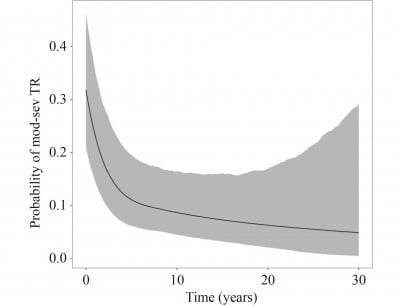Gause, G. F. Experimental analysis of Vito Volterra’s mathematical theory of the struggle for existence. Science 79, 16–17 (1934).
CAS
PubMed
Google Scholar
Losos, J. B. Lizards in an Evolutionary Tree: Ecology and Adaptive Radiation of Anoles (UC Press, 2011).
Grant, P. R. & Grant, B. R. How and Why Species Multiply: The Radiation of Darwin’s Finches (Princeton Univ. Press, 2020).
Losos, J. B., Warheitt, K. I. & Schoener, T. W. Adaptive differentiation following experimental island colonization in Anolis lizards. Nature 387, 70–73 (1997).
CAS
Google Scholar
Ronco, F. et al. Drivers and dynamics of a massive adaptive radiation in cichlid fishes. Nature 589, 76–81 (2021).
CAS
PubMed
Google Scholar
Carothers, J. H. & Jaksić, F. M. Time as a niche difference: the role of interference competition. Oikos 42, 403 (1984).
Google Scholar
Kronfeld-Schor, N. & Dayan, T. Partitioning of time as an ecological resource. Annu. Rev. Ecol. Evol. Syst. 34, 153–181 (2003).
Google Scholar
Lear, K. O., Whitney, N. M., Morris, J. J. & Gleiss, A. C. Temporal niche partitioning as a novel mechanism promoting co-existence of sympatric predators in marine systems. Proc. R. Soc. B. 288, 20210816 (2021).
PubMed
PubMed Central
Google Scholar
Nakabayashi, M. et al. Temporal activity patterns suggesting niche partitioning of sympatric carnivores in Borneo, Malaysia. Sci. Rep. 11, 19819 (2021).
CAS
PubMed
PubMed Central
Google Scholar
Salzburger, W. & Meyer, A. The species flocks of East African cichlid fishes: recent advances in molecular phylogenetics andpopulation genetics. Naturwissenschaften 91, 277–290 (2004).
CAS
PubMed
Google Scholar
McGee, M. D. et al. The ecological and genomic basis of explosive adaptive radiation. Nature 586, 75–79 (2020).
CAS
PubMed
Google Scholar
Salzburger, W. Understanding explosive diversification through cichlid fish genomics. Nat. Rev. Genet. 19, 705–717 (2018).
CAS
PubMed
Google Scholar
Konings, A. Tanganyika Cichlids in their Natural Habitat (Cichlid Press, 2019).
Lloyd, E., Chhouk, B., Conith, A. J., Keene, A. C. & Albertson, R. C. Diversity in rest-activity patterns among Lake Malawi cichlid fishes suggests a novel axis of habitat partitioning. J. Exp. Biol. 224, jeb242186 (2021).
PubMed
PubMed Central
Google Scholar
Pohlmann, K., Atema, J. & Breithaupt, T. The importance of the lateral line in nocturnal predation of piscivorous catfish. J. Exp. Biol. 207, 2971–2978 (2004).
PubMed
Google Scholar
Edgley, D. E. & Genner, M. J. Adaptive diversification of the lateral line system during cichlid fish radiation. iScience 16, 1–11 (2019).
PubMed
PubMed Central
Google Scholar
Prober, D. A., Rihel, J., Onah, A. A., Sung, R.-J. & Schier, A. F. Hypocretin/orexin overexpression induces an insomnia-like phenotype in zebrafish. J. Neurosci. 26, 13400–13410 (2006).
CAS
PubMed
PubMed Central
Google Scholar
de Villemereuil, P., Gaggiotti, O. E., Mouterde, M. & Till-Bottraud, I. Common garden experiments in the genomic era: new perspectives and opportunities. Heredity 116, 249–254 (2016).
PubMed
Google Scholar
Jaggard, J. B., Lloyd, E., Lopatto, A., Duboue, E. R. & Keene, A. C. Automated measurements of sleep and locomotor activity in Mexican cavefish. J. Vis. Exp. https://doi.org/10.3791/59198 (2019).
PubMed
Google Scholar
Bitsikas, V., Cubizolles, F. & Schier, A. F. A vertebrate family without a functional hypocretin/orexin arousal system. Curr. Biol. 34, 1532–1540 (2024).
CAS
PubMed
Google Scholar
Yuma, M., Narita, T., Hori, M. & Kondo, T. Food resources of shrimp-eating cichlid fishes in Lake Tanganyika. Environ. Biol. Fishes 52, 371–378 (1998).
Google Scholar
Eccles, D. H. Is speciation of demersal fishes in Lake Tanganyika restrained by physical limnological conditions? Biol. J. Linn. Soc. 29, 115–122 (1986).
Google Scholar
Gashagaza, M. M. Feeding activity of a Tanganyikan cichlid fish Lamprologus brichardi. Afr. Stud. Monogr. 9, 1–9 (1988).
Google Scholar
Desjardins, J. K., Fitzpatrick, J. L., Stiver, K. A., Van Der Kraak, G. J. & Balshine, S. Lunar and diurnal cycles in reproductive physiology and behavior in a natural population of cooperatively breeding fish. J. Zool. 285, 66–73 (2011).
Google Scholar
Yokogawa, T. et al. Characterization of sleep in zebrafish and insomnia in hypocretin receptor mutants. PLoS Biol. 5, e277 (2007).
PubMed
PubMed Central
Google Scholar
Zhdanova, I. V., Wang, S. Y., Leclair, O. U. & Danilova, N. P. Melatonin promotes sleep-like state in zebrafish. Brain Res. 903, 263–268 (2001).
CAS
PubMed
Google Scholar
Indermaur, A., Schedel, F. D. B. & Ronco, F. Morphological diversity of the genus Telmatochromis from the Lake Tanganyika drainage with the description of a new riverine species and the generic reassignment of the Malagarasi River lamprologine. J. Fish Biol. 106, 1214–1230 (2024).
PubMed
PubMed Central
Google Scholar
Siegel, J. M. Sleep function: an evolutionary perspective. Lancet Neurol. 21, 937–946 (2022).
PubMed
PubMed Central
Google Scholar
Adams, D. C. A generalized K statistic for estimating phylogenetic signal from shape and other high-dimensional multivariate data. Syst. Biol. 63, 685–697 (2014).
PubMed
Google Scholar
Mitteroecker, P., Collyer, M. L. & Adams, D. C. Exploring phylogenetic signal in multivariate phenotypes by maximizing Blomberg’s K. Syst. Biol. 74, 215–229 (2024).
PubMed Central
Google Scholar
Kirk, E. C. Comparative morphology of the eye in primates. Anat. Rec. 281A, 1095–1103 (2004).
Google Scholar
Hall, M. I. & Ross, C. F. Eye shape and activity pattern in birds. J. Zool. 271, 437–444 (2007).
Google Scholar
Schmitz, L. & Motani, R. Morphological differences between the eyeballs of nocturnal and diurnal amniotes revisited from optical perspectives of visual environments. Vision Res. 50, 936–946 (2010).
PubMed
Google Scholar
Schmitz, L. & Wainwright, P. C. Nocturnality constrains morphological and functional diversity in the eyes of reef fishes. BMC Evol. Biol. 11, 338 (2011).
PubMed
PubMed Central
Google Scholar
Curtis, D. J. & Rasmussen, M. A. The evolution of cathemerality in primates and other mammals: a comparative and chronoecological approach. Folia Primatol. 77, 178–193 (2006).
CAS
Google Scholar
Santini, L., Rojas, D. & Donati, G. Evolving through day and night: origin and diversification of activity pattern in modern primates. Behav. Ecol. 26, 789–796 (2015).
Google Scholar
Cox, D. T. C. & Gaston, K. J. Cathemerality: a key temporal niche. Biol. Rev. 99, 329–347 (2024).
PubMed
Google Scholar
Price, S. A. et al. Two waves of colonization straddling the K–Pg boundary formed the modern reef fish fauna. Proc. R. Soc. B. 281, 20140321 (2014).
CAS
PubMed
PubMed Central
Google Scholar
Sommer-Trembo, C. et al. The genetics of niche-specific behavioral tendencies in an adaptive radiation of cichlid fishes. Science 384, 470–475 (2024).
CAS
PubMed
Google Scholar
Cingolani, P. et al. A program for annotating and predicting the effects of single nucleotide polymorphisms, SnpEff: SNPs in the genome of Drosophila melanogaster strain w1118; iso-2; iso-3. Fly 6, 80–92 (2012).
CAS
PubMed
PubMed Central
Google Scholar
Szkiba, D., Kapun, M., von Haeseler, A. & Gallach, M. SNP2GO: functional analysis of genome-wide association studies. Genetics 197, 285–289 (2014).
PubMed
PubMed Central
Google Scholar
Fischer, R. M. et al. Co-expression of VAL- and TMT-opsins uncovers ancient photosensory interneurons and motorneurons in the vertebrate brain. PLoS Biol. 11, e1001585 (2013).
CAS
PubMed
PubMed Central
Google Scholar
Kunst, M. et al. Calcitonin gene-related peptide neurons mediate sleep-specific circadian output in Drosophila. Curr. Biol. 24, 2652–2664 (2014).
CAS
PubMed
PubMed Central
Google Scholar
Woods, I. G. et al. Neuropeptidergic signaling partitions arousal behaviors in zebrafish. J. Neurosci. 34, 3142–3160 (2014).
CAS
PubMed
PubMed Central
Google Scholar
Byrne, E. M. et al. A genome-wide association study of sleep habits and insomnia. Am. J. Med. Genet. B: Neuropsychiatr. Genet. 162B, 439–451 (2013).
PubMed
Google Scholar
Parsons, M. J. et al. Replication of genome‐wide association studies (GWAS) loci for sleep in the British G1219 cohort. Am. J. Med. Genet. B: Neuropsychiatr. Genet. 162B, 431–438 (2013).
PubMed
Google Scholar
Prasad, C., Rupar, T. & Prasad, A. N. Pyruvate dehydrogenase deficiency and epilepsy. Brain Dev. 33, 856–865 (2011).
PubMed
Google Scholar
Chander, P., Kennedy, M. J., Winckler, B. & Weick, J. P. Neuron-specific gene 2 (NSG2) encodes an AMPA receptor interacting protein that modulates excitatory neurotransmission. eNeuro https://doi.org/10.1523/ENEURO.0292-18.2018 (2019).
Zimmerman, A. J. et al. Knockout of AMPA receptor binding protein neuron-specific gene 2 (NSG2) enhances associative learning and cognitive flexibility. Preprint at bioRxiv https://doi.org/10.1101/2024.02.23.581648 (2024).
Funghini, S. et al. Carbamoyl phosphate synthetase 1 deficiency in Italy: clinical and genetic findings in a heterogeneous cohort. Gene 493, 228–234 (2012).
CAS
PubMed
Google Scholar
Yao, J., Gaffaney, J. D., Kwon, S. E. & Chapman, E. R. Doc2 is a Ca2+ sensor required for asynchronous neurotransmitter release. Cell 147, 666–677 (2011).
CAS
PubMed
PubMed Central
Google Scholar
Courtney, N. A., Briguglio, J. S., Bradberry, M. M., Greer, C. & Chapman, E. R. Excitatory and inhibitory neurons utilize different Ca2+ sensors and sources to regulate spontaneous release. Neuron 98, 977–991 (2018).
CAS
PubMed
PubMed Central
Google Scholar
Shafer, M. E. R., Nichols, A. L. A., Schier, A. F. & Salzburger, W. Frequent transitions from night-to-day activity after mass extinctions. Preprint at bioRxiv https://doi.org/10.1101/2023.10.27.564421 (2023).
Watabe, R., Tsunoda, H. & Saito, M. U. Evaluating the temporal and spatio-temporal niche partitioning between carnivores by different analytical method in northeastern Japan. Sci. Rep. 12, 11987 (2022).
CAS
PubMed
PubMed Central
Google Scholar
Ito, F. & Awasaki, T. Comparative analysis of temperature preference behavior and effects of temperature on daily behavior in 11 Drosophila species. Sci. Rep. 12, 12692 (2022).
CAS
PubMed
PubMed Central
Google Scholar
Joyce, M. et al. Divergent evolution of sleep functions. Preprint at bioRxiv https://doi.org/10.1101/2023.05.27.541573 (2023).
Lloyd, E. et al. Ontogeny and social context regulate the circadian activity patterns of Lake Malawi cichlids. J. Comp. Physiol. B 194, 299–313 (2023).
PubMed
PubMed Central
Google Scholar
Slavenko, A. et al. Evolution of diel activity patterns in skinks (Squamata: Scincidae), the world’s second‐largest family of terrestrial vertebrates. Evolution 76, 1195–1208 (2022).
PubMed
PubMed Central
Google Scholar
Gamble, T., Greenbaum, E., Jackman, T. R. & Bauer, A. M. Into the light: diurnality has evolved multiple times in geckos. Biol. J. Linn. Soc. Lond. 115, 896–910 (2015).
Google Scholar
Maor, R., Dayan, T., Ferguson-Gow, H. & Jones, K. E. Temporal niche expansion in mammals from a nocturnal ancestor after dinosaur extinction. Nat. Ecol. Evol. 1, 1889–1895 (2017).
PubMed
Google Scholar
Kautt, A. F. et al. Contrasting signatures of genomic divergence during sympatric speciation. Nature 588, 106–111 (2020).
CAS
PubMed
PubMed Central
Google Scholar
Nosil, P., Feder, J. L. & Gompert, Z. How many genetic changes create new species? Science 371, 777–779 (2021).
CAS
PubMed
Google Scholar
Smale, L., Lee, T. & Nunez, A. A. Mammalian diurnality: some facts and gaps. J. Biol. Rhythms 18, 356–366 (2003).
PubMed
Google Scholar
Challet, E. Minireview: entrainment of the suprachiasmatic clockwork in diurnal and nocturnal mammals. Endocrinology 148, 5648–5655 (2007).
CAS
PubMed
Google Scholar
Erkert, H. G. Diurnality and nocturnality in nonhuman primates: comparative chronobiological studies in laboratory and nature. Biol. Rhythm Res. 39, 229–267 (2008).
Google Scholar
Cohen, R., Kronfeld-Schor, N., Ramanathan, C., Baumgras, A. & Smale, L. The substructure of the suprachiasmatic nucleus: similarities between nocturnal and diurnal spiny mice. Brain Behav. Evol. 75, 9–22 (2010).
PubMed
PubMed Central
Google Scholar
van Rosmalen, L. et al. Energy balance drives diurnal and nocturnal brain transcriptome rhythms. Cell Rep. 43, 113951 (2024).
PubMed
PubMed Central
Google Scholar
Ramanathan, C., Nunez, A. A. & Smale, L. Daily rhythms in PER1 within and beyond the suprachiasmatic nucleus of female grass rats (Arvicanthis niloticus). Neuroscience 156, 48–58 (2008).
CAS
PubMed
Google Scholar
Yan, L., Smale, L. & Nunez, A. A. Circadian and photic modulation of daily rhythms in diurnal mammals. Eur. J. Neurosci. 51, 551–566 (2020).
PubMed
Google Scholar
Frøland Steindal, I. A. & Whitmore, D. Circadian clocks in fish—what have we learned so far? Biology 8, 17 (2019).
PubMed
PubMed Central
Google Scholar
Phillips, A. J. K., Fulcher, B. D., Robinson, P. A. & Klerman, E. B. Mammalian rest/activity patterns explained by physiologically based modeling. PLoS Comput. Biol. 9, e1003213 (2013).
CAS
PubMed
PubMed Central
Google Scholar
Rietveld, W. J., Minors, D. S. & Waterhouse, J. M. Circadian rhythms and masking: an overview. Chronobiol. Int. 10, 306–312 (1993).
CAS
PubMed
Google Scholar
Levy, O., Dayan, T. & Kronfeld‐Schor, N. The relationship between the golden spiny mouse circadian system and its diurnal activity: an experimental field enclosures and laboratory study. Chronobiol. Int. 24, 599–613 (2007).
PubMed
Google Scholar
Fenn, M. G. P. & Macdonald, D. W. Use of middens by red foxes: risk reverses rhythms of rats. J. Mammal. 76, 130–136 (1995).
Google Scholar
Lane, J. M. et al. Genome-wide association analyses of sleep disturbance traits identify new loci and highlight shared genetics with neuropsychiatric and metabolic traits. Nat. Genet. 49, 274–281 (2017).
CAS
PubMed
Google Scholar
Li, H.-T., Viskaitis, P., Bracey, E., Peleg-Raibstein, D. & Burdakov, D. Transient targeting of hypothalamic orexin neurons alleviates seizures in a mouse model of epilepsy. Nat. Commun. 15, 1249 (2024).
CAS
PubMed
PubMed Central
Google Scholar
Harris, C. R. et al. Array programming with NumPy. Nature 585, 357–362 (2020).
CAS
PubMed
PubMed Central
Google Scholar
A. Klein et al. imageio/imageio: v.2.34.0. Zenodo https://doi.org/10.5281/zenodo.1488561 (2024).
Bradski, G. opencv_library. Dr. Dobb’s J. 120, 122–125 (2008).
The pandas development team. pandas-dev/pandas: Pandas. Zenodo https://doi.org/10.5281/zenodo.3509134 (2024).
Hunter, J. D. Matplotlib: a 2D graphics environment. Comput. Sci. Eng. 9, 90–95 (2007).
Google Scholar
Simonov, K. PyYAML (2023).
Pedregosa, F. et al. Scikit-learn: machine learning in Python. J. Mach. Learn. Res. 12, 2825–2830 (2011).
Google Scholar
Moškon, M. CosinorPy: a Python package for cosinor-based rhythmometry. BMC Bioinform. 21, 485 (2020).
Google Scholar
Waskom, M. seaborn: statistical data visualization. J. Open Source Softw. 6, 3021 (2021).
Google Scholar
Van Der Velden, E. CMasher: scientific colormaps for making accessible, informative and ‘cmashing’ plots. J. Open Source Softw. 5, 2004 (2020).
Google Scholar
Revell, L. J. phytools 2.0: an updated R ecosystem for phylogenetic comparative methods (and other things). PeerJ 12, e16505 (2024).
PubMed
PubMed Central
Google Scholar
Baken, E. K., Collyer, M. L., Kaliontzopoulou, A. & Adams, D. C. geomorph v.4.0 and gmShiny: enhanced analytics and a new graphical interface for a comprehensive morphometric experience. Methods Ecol. Evol. 12, 2355–2363 (2021).
Google Scholar
Liland, K. H., Mevik, B.-H., Wehrens, R. & Hiemstra, P. pls: partial least squares and principal component regression. R package version 2.8-5 (2024).
Adams, D. C., Collyer, M. L., Kaliontzopoulou, A. & Baken, E. K. Geomorph: software for geometric morphometric analyses. R package version 4.0.7 (2024).
Pennell, M. W. et al. geiger v.2.0: an expanded suite of methods for fitting macroevolutionary models to phylogenetic trees. Bioinform. 30, 2216–2218 (2014).
CAS
Google Scholar
Li, H. & Durbin, R. Fast and accurate long-read alignment with Burrows–Wheeler transform. Bioinform. 26, 589–595 (2010).
Google Scholar
Broad Institute. Picard toolkit (2019).
Orme, D. et al. caper: comparative analysis of phylogenetics and evolution in R. R package version 1.0.3 (2023).
Nichols, A. L. A. et al. Widespread temporal niche partitioning in an adaptive radiation of cichlid fishes. Dryad https://doi.org/10.5061/dryad.j0zpc86sv (2025).
Nichols, A. L. A. & Fritschi, L. annnic/cichlid-tracking: widespread temporal niche code. Zenodo https://doi.org/10.5281/zenodo.15691181 (2025).
Nichols, A. L. A. & Shafer, M. E. R. annnic/cichlid-analysis: widespread temporal niche code. Zenodo https://doi.org/10.5281/zenodo.15691175 (2025).
Shafer, M. E. R. & Abdalla-Wyse, A. maxshafer/cichlid_sleep_gwas: widespread temporal niche GWAS code. Zenodo https://doi.org/10.5281/zenodo.15691606 (2025).














